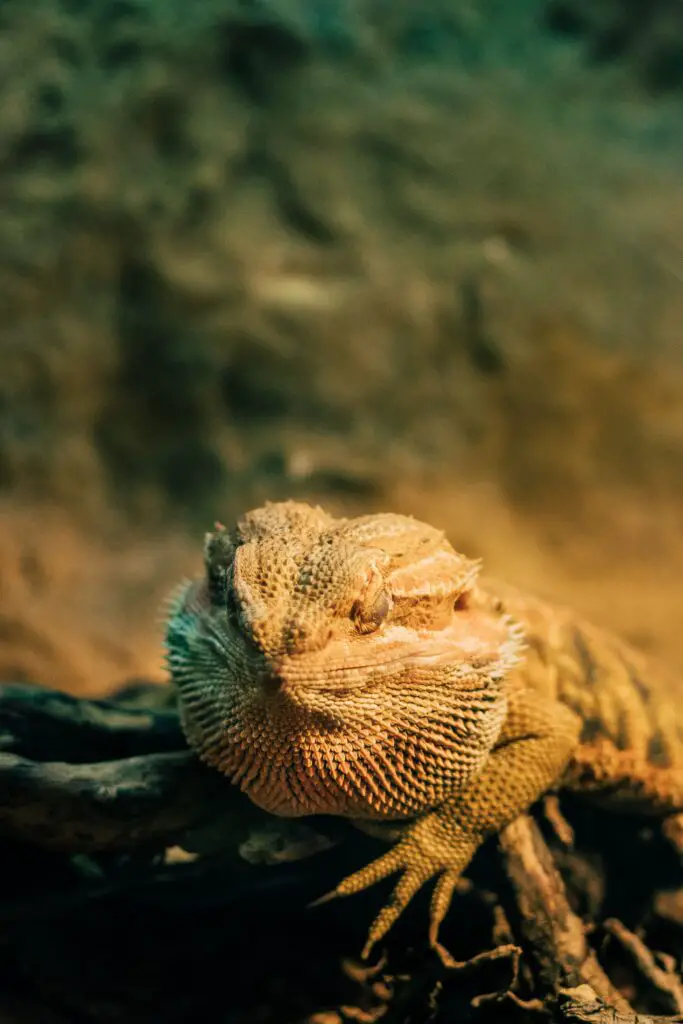How Long Does a Bearded Dragon Live
How long does a bearded dragon live: Bearded dragons, scientifically known as Pogona, have gained immense popularity as pets in recent years. These unique reptiles have captured the hearts of pet enthusiasts worldwide with their fascinating behaviors, striking appearance, and relatively easy care requirements. Native to the arid regions of Australia, bearded dragons have adapted remarkably well to captive environments and can make wonderful companions for those willing to provide them with proper care.
Brief overview of bearded dragons as popular pets
Bearded dragons have become one of the most sought-after reptile species in the pet trade due to their docile nature and captivating personalities. Their friendly demeanor and ease of handling make them an ideal choice for both experienced reptile keepers and beginners alike.
With their unique ability to communicate through various body language displays, including head bobbing and arm waving, these charming creatures quickly establish a bond with their owners. Not only do bearded dragons possess an intriguing repertoire of behaviors that pet owners find endearing, but they are also visually striking creatures that command attention.
With their scaly bodies adorned in vibrant colors ranging from earthy browns to fiery oranges and yellows, these lizards are truly a sight to behold. Additionally, male bearded dragons sport a distinct beard-like structure under the chin that can puff up when they feel threatened or during territorial displays.
Importance of understanding their lifespan
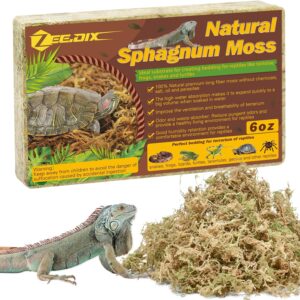 A crucial aspect of responsible pet ownership is having a thorough understanding of the lifespan of the animal you invite into your home. Bearded dragons may live relatively long lives compared to other reptile species; however, there is considerable variation within this lifespan range depending on various factors such as genetics, environment, and overall care provided by their owners.
A crucial aspect of responsible pet ownership is having a thorough understanding of the lifespan of the animal you invite into your home. Bearded dragons may live relatively long lives compared to other reptile species; however, there is considerable variation within this lifespan range depending on various factors such as genetics, environment, and overall care provided by their owners.
By comprehending the average lifespan range of bearded dragons and the factors that influence it, pet owners can better prepare themselves for the commitment required to ensure their pets’ long and healthy lives. Understanding the potential lifespan of these captivating reptiles allows owners to make informed decisions regarding their care, ranging from appropriate enclosures and diet choices to establishing a proactive approach towards preventive healthcare.
Moreover, knowledge about bearded dragon lifespans enables owners to identify signs of aging or potential health issues early on, thus allowing timely interventions that can significantly impact the quality of life and overall longevity of these remarkable creatures. By delving into this topic further, we can explore the various factors influencing bearded dragon lifespans and gain valuable insights into maximizing their wellbeing as cherished companions.
Lifespan Factors
Genetic Factors
How long does a bearded dragon live for: Genetic factors play a crucial role in determining the lifespan of bearded dragons. Just like in any living organism, the genetic makeup of a bearded dragon can influence its overall health and longevity.
Some genetic traits may make certain individuals more predisposed to certain health issues or make them more resilient against common ailments. Breeding practices also have a significant impact on the lifespan of bearded dragons.
Responsible breeders carefully select healthy individuals with diverse genetic backgrounds for mating, avoiding close relatives to minimize the risk of genetic disorders. In contrast, improper breeding practices that prioritize appearance over health can lead to weakened immune systems and increased susceptibility to diseases, ultimately shortening the lifespan of these reptiles.
Environmental Factors
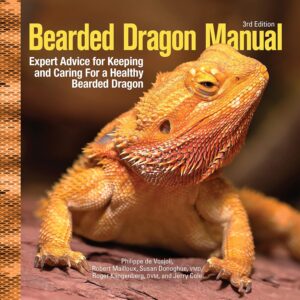 Creating an optimal environment for your bearded dragon is essential for ensuring a long and healthy life. Two key factors that significantly affect their lifespan are temperature and humidity levels.
Creating an optimal environment for your bearded dragon is essential for ensuring a long and healthy life. Two key factors that significantly affect their lifespan are temperature and humidity levels.
Bearded dragons are ectothermic creatures, meaning they rely on external sources to regulate their body temperature. Maintaining an appropriate basking spot temperature between 95-110°F (35-43°C) during the day is crucial for their well-being.
Additionally, providing a cooler area within their enclosure allows them to thermoregulate properly. Proper humidity levels are equally important for these desert-dwelling reptiles.
Bearded dragons require relatively low humidity levels between 30-40% to prevent respiratory problems and skin issues caused by excessive moisture. Regular monitoring and adjustments using digital hygrometers will help ensure optimal conditions within their habitat.
A proper diet is another essential environmental factor that contributes significantly to a bearded dragon’s lifespan. Providing a balanced diet rich in essential nutrients is crucial for maintaining good health and promoting longevity in these reptiles.
Bearded dragons need a combination of live insects (such as crickets or dubia roaches), leafy greens, and occasional fruits to meet their nutritional requirements. Adequate calcium and vitamin supplementation are also necessary to prevent metabolic bone disease, a common condition that can shorten their lifespan if left untreated.
Understanding the interplay between genetic and environmental factors is vital for promoting the longevity of bearded dragons. Responsible breeding practices and selecting healthy individuals with diverse genetic backgrounds contribute to a stronger immune system and better overall health.
Additionally, maintaining optimal temperature, humidity levels, and providing a well-balanced diet are crucial aspects of creating an environment that supports their longevity. By considering these factors and implementing appropriate care practices, you can ensure that your bearded dragon lives a long and fulfilling life.
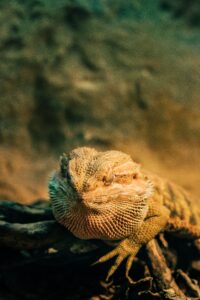
How Long Does a Bearded Dragon Live: Average Lifespan Range
Bearded dragons, scientifically known as Pogona vitticeps, are fascinating reptiles that have captured the hearts of many reptile enthusiasts. When it comes to their lifespan in captivity, bearded dragons typically live for an average of 6 to 10 years. This range is influenced by various factors, including genetics, care quality, and environmental conditions.
While some individuals may surpass this average and live longer, others may unfortunately have a shorter lifespan. It is important to note that the average lifespan range mentioned above refers specifically to bearded dragons kept in captivity.
In the wild, these reptiles may face more challenges and dangers that can significantly shorten their lifespans. In a controlled environment where they receive proper care and attention from their owners, bearded dragons tend to lead longer and healthier lives.
Factors That Influence Variation Within the Average Range
Within the average lifespan range of 6 to 10 years for captive bearded dragons, there can be considerable variation in individual lifespans. Several factors contribute to this variability:
- Genetics: Genetic predispositions can play a role in determining a bearded dragon’s longevity. Some individuals may inherit certain traits or health conditions that affect their overall health and lifespan.
- Care Quality: The level of care provided by the owner significantly influences a bearded dragon’s lifespan. Providing appropriate habitat conditions, maintaining optimal temperatures and humidity levels within their enclosure, offering a balanced diet with proper supplementation, ensuring regular veterinary check-ups – all these factors contribute to their overall health and longevity.
- Environmental Conditions: The environment in which a captive bearded dragon lives also affects its lifespan. Providing an enclosure with sufficient space for exercise and mental stimulation is crucial for their well-being. Additionally, maintaining optimal temperature gradients throughout the day allows them to regulate their body temperature effectively, supporting their overall health and longevity.
By understanding the average lifespan range of bearded dragons and the factors that contribute to variations within this range, we can better appreciate the importance of providing them with proper care, nutrition, and living conditions. This knowledge empowers us as responsible pet owners to create an environment where these remarkable reptiles can thrive and potentially surpass their expected lifespan.
How Long Does a Bearded Dragon Live For: Record-Breaking Longevity Cases
Highlighting exceptional cases of bearded dragons living beyond the average range
Bearded dragons are known to have an average lifespan ranging from 6 to 10 years, but there have been remarkable cases where these captivating creatures have surpassed this typical lifespan. These record-breaking longevity instances serve as a testament to the exceptional care and genetic factors that can contribute to a bearded dragon’s extended life. One notable case in the world of bearded dragons is the oldest recorded individual who lived an astounding 29 years.
This extraordinary longevity is truly exceptional, considering the usual lifespan of their species. The precise reasons why this particular bearded dragon lived significantly longer than others remain uncertain, but it is believed that a combination of various factors played a role.
Factors contributing to their longevity (e.g., exceptional care, genetics)
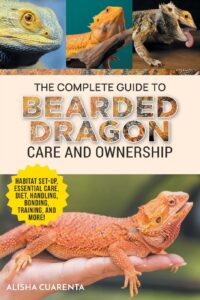 Several factors may contribute to a bearded dragon’s extended lifespan beyond the average range. Exceptional care stands out as one critical factor that influences their overall well-being and longevity.
Several factors may contribute to a bearded dragon’s extended lifespan beyond the average range. Exceptional care stands out as one critical factor that influences their overall well-being and longevity.
Providing an optimal habitat, including appropriate temperature and humidity levels, UV lighting for proper calcium metabolism, and spacious enclosures with opportunities for physical activity and mental stimulation can significantly impact their health. Furthermore, consistent access to a nutritionally balanced diet plays a pivotal role in promoting longevity in bearded dragons.
A well-rounded diet should consist of live insects such as crickets or mealworms enriched with valuable nutrients through gut-loading and dusted with calcium supplements. Additionally, incorporating fresh vegetables and fruits into their diet ensures they receive essential vitamins and minerals necessary for their overall health.
Genetics also play a significant role in determining the potential lifespan of a bearded dragon. While it is challenging to ascertain specific genetic factors linked to extraordinary longevity accurately, responsible breeding practices can influence these traits.
Selective breeding programs focused on preserving healthy bloodlines and avoiding inbreeding can contribute to the overall health and longevity of bearded dragons. Record-breaking cases of bearded dragons living beyond the average range highlight both exceptional care and genetic factors as key contributors to their extended lifespan.
The oldest recorded bearded dragon at 29 years exemplifies the remarkable potential for longevity in these captivating reptiles. By providing exceptional care, including a well-balanced diet, proper habitat conditions, and regular veterinary check-ups, combined with responsible breeding practices, it is possible to create an environment conducive to a longer lifespan for these beloved pets.
Common Health Issues and Impact on Lifespan
Overview of Common Health Problems in Bearded Dragons
How long does a bearded dragon live for: Bearded dragons, despite being hardy reptiles, are susceptible to various health issues that can significantly impact their lifespan. As responsible owners, it is essential to be aware of these common health problems and take necessary measures to prevent or address them promptly. By understanding these issues, we can ensure the well-being and longevity of our scaly companions.
Metabolic Bone Disease Due to Calcium Deficiency
One prevalent health concern in bearded dragons is metabolic bone disease (MBD), which occurs due to calcium deficiency. MBD occurs when the dragon’s diet lacks sufficient calcium or when the absorption and metabolism of calcium are hindered.
This crucial mineral is vital for proper bone growth, muscular function, and overall well-being. Without adequate calcium levels, bearded dragons may develop weakened bones that are prone to fractures and deformities.
Preventing MBD involves providing a balanced diet rich in calcium sources such as gut-loaded insects (previously fed nutritious foods themselves) like crickets or dubia roaches. Additionally, leafy greens such as collard greens or kale should be included regularly.
Ensuring appropriate exposure to UVB lighting enables the synthesis of vitamin D3, which aids in calcium absorption from the diet. Proper supplementation with reptile-specific calcium supplements also helps meet their nutritional needs.
Respiratory Infections Caused by Improper Habitat Conditions
Another significant health issue for bearded dragons stems from respiratory infections caused by improper habitat conditions. These infections often occur when there is inadequate ventilation or when temperature and humidity levels are not maintained within suitable ranges. To prevent respiratory infections, it is crucial to provide a well-ventilated enclosure with proper air circulation.
Avoid placing your dragon’s habitat in areas with drafts or excessive humidity, as both can lead to respiratory issues. Maintaining optimal temperature and humidity levels, typically around 95°F (35°C) for basking spots and 30-40% humidity, helps support their respiratory health.
Regularly cleaning the enclosure and ensuring a hygienic environment also minimizes the risk of infections. By taking proactive measures to address these common health problems in bearded dragons, owners can significantly improve their pets’ quality of life and enhance their lifespan.
Prompt veterinary intervention and regular check-ups are crucial if any signs of illness or discomfort arise. By providing a suitable habitat, a balanced diet rich in calcium, and maintaining proper hygiene, we can help our bearded dragons thrive in good health for many years to come.
How Long Does a Bearded Dragon Live For: Proper Care Guidelines for a Longer Lifespan
Providing an Appropriate Enclosure Setup
To ensure the longevity of your beloved bearded dragon, it is crucial to provide them with an appropriate enclosure setup. Firstly, consider the size of the habitat.
A spacious enclosure allows for physical activity and reduces stress. A 40-gallon tank is suitable for a juvenile, while an adult may require a minimum of 75 gallons or more.
Ensure adequate ventilation without compromising temperature and humidity levels. When it comes to lighting, both heat and UVB exposure are essential.
Install a suitable basking heat lamp that provides enough warmth to create a temperature gradient within the enclosure. On one end, maintain a basking spot around 95-110°F (35-43°C), while the other end should have cooler zones around 75-80°F (24-27°C).
Additionally, invest in a high-quality UVB light that emits UVA and UVB rays to facilitate proper calcium absorption. Choosing the right substrate is vital for hygiene and safety purposes.
Avoid loose substrates like sand or gravel as they can lead to impaction if ingested accidentally during feeding. Newspaper or reptile carpet are good options as they are easy to clean and do not pose any risks.
Creating a Stimulating Environment with Hiding Spots and Climbing Opportunities To promote mental stimulation, it is crucial to create an enriching environment for your bearded dragon.
Provide ample hiding spots such as caves or branches where they can retreat when feeling stressed or seeking privacy. Additionally, incorporate various climbing opportunities using logs or branches securely anchored within their habitat.
Nutritional Requirements for Optimal Health
A balanced diet plays a significant role in ensuring optimal health and longevity for bearded dragons. Their diet should consist of live insects such as crickets, mealworms, or dubia roaches, which are rich in protein.
Additionally, supplement their diet with a variety of vegetables and fruits to provide essential vitamins and minerals. It is crucial to gut-load the insects before feeding them to your dragon.
Gut-loading involves feeding the insects nutritious foods that will subsequently be passed onto your pet. This practice ensures that your bearded dragon receives a well-rounded nutritional intake.
Regular Veterinary Check-ups and Preventive Care
Just like any other pet, regular veterinary check-ups are essential for maintaining the health and longevity of bearded dragons. A reptile-savvy veterinarian can assess their overall health, provide necessary vaccinations if applicable, and address any concerns or potential issues you may have missed. In addition to veterinary care, implementing preventive measures is crucial.
Regularly clean the enclosure and provide fresh water daily. Monitor the temperature and humidity levels consistently to prevent respiratory infections or other climate-related complications.
To sum up how long does a bearded dragon live for
By following these proper care guidelines, you can significantly enhance the lifespan of your treasured bearded dragon companion. Creating an environment that meets their physical and psychological needs ensures their well-being while supporting optimal growth and longevity. By providing an appropriate enclosure setup, a stimulating environment with hiding spots and climbing opportunities, meeting their nutritional requirements through a balanced diet with gut-loaded insects, along with regular veterinary check-ups and preventive care measures; you can enjoy many years of joyous companionship with your vibrant scaled friend.
Further Reading:
- Carolina Custom Cages Terrarium Review
- 8 Best Basking Rocks for Beardie: What Is the Best Choice?
- 10 Best Thermometers for Beardie: How to Choose the Best One?
- 5 Best Beardie Lighting Setups for Beardie Lovers
- 9 Best Heat Lamps for Beardie: Natural Habitat Provided

